Tennessee Field Diamonds
3
A treasure 485 million years in the
making.
|
Crystals from a small deposit near
I-81 Exit 8
(locality 10)
Jefferson County, TN
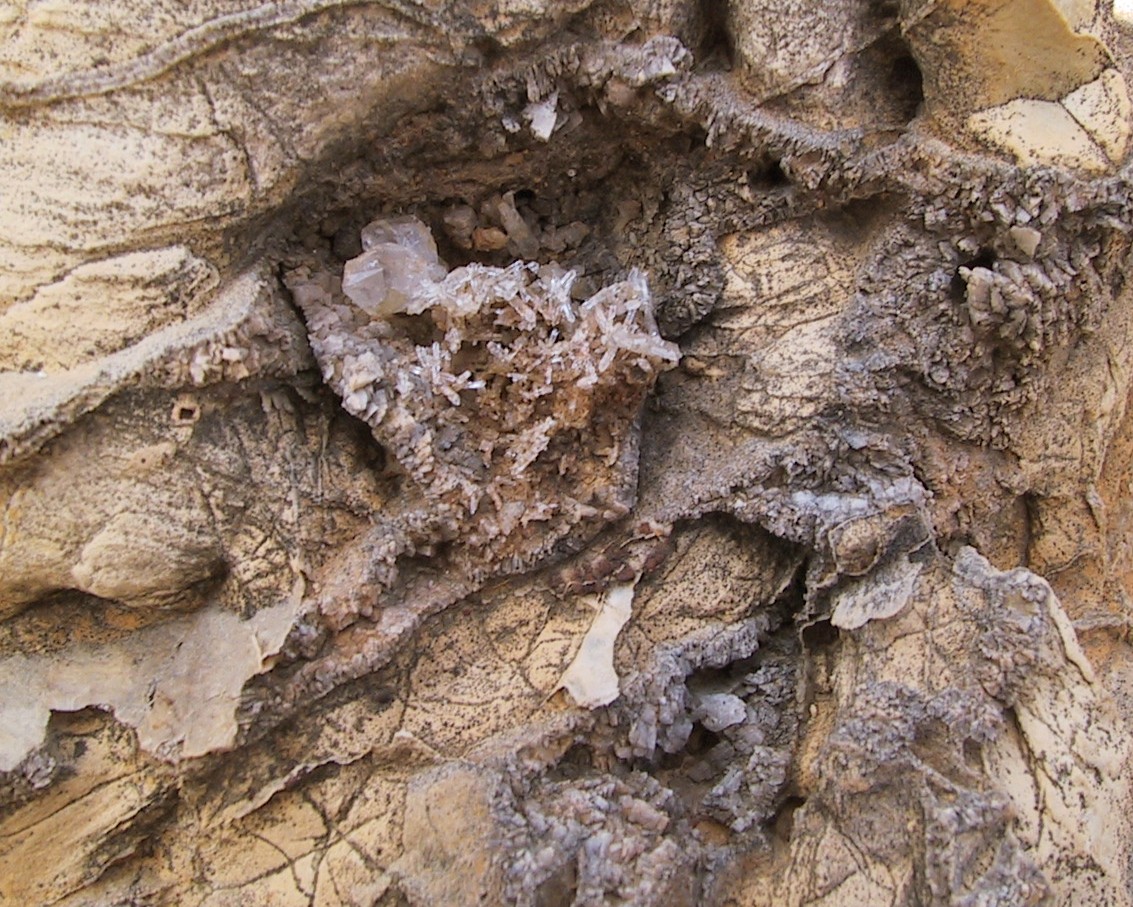
The area is a roadside excavation for fill dirt. Quartz
crystals were first noticed here in breccia vugs in a
dolomite exposure. This image shows thin almost
needle like quartz crystals and two larger ones.
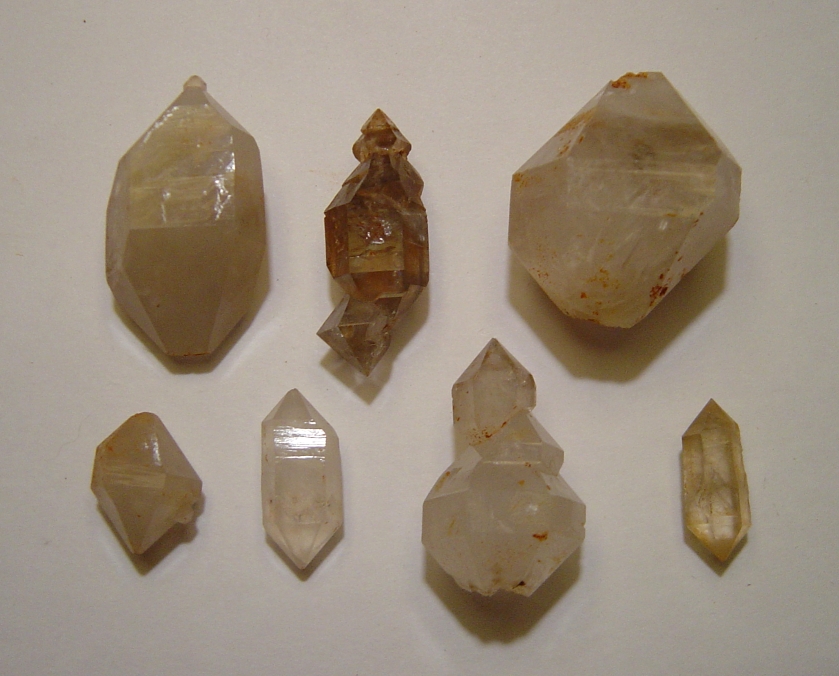
Later the residual clays were searched and some
concentrations of quartz crystals located. These
are some of the more typical crystals.
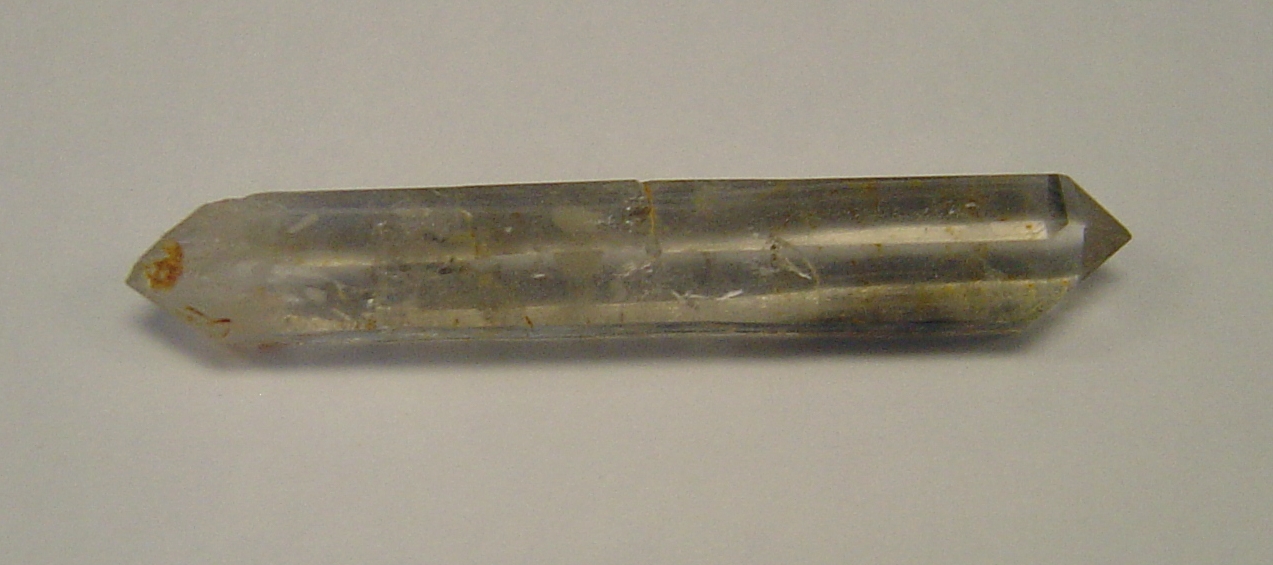
An elongated prism found on the surface.
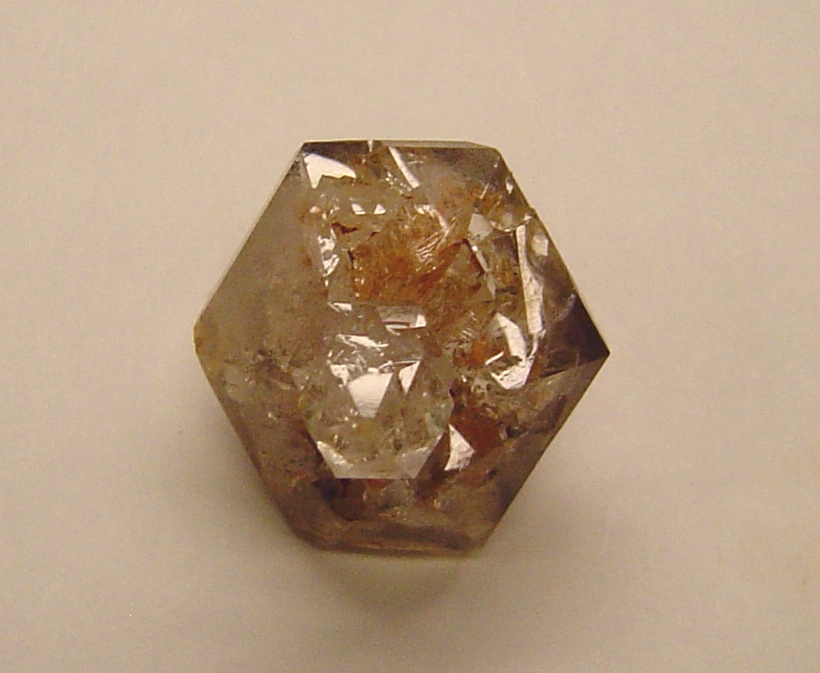
Unusual compound bipyramidal crystal.
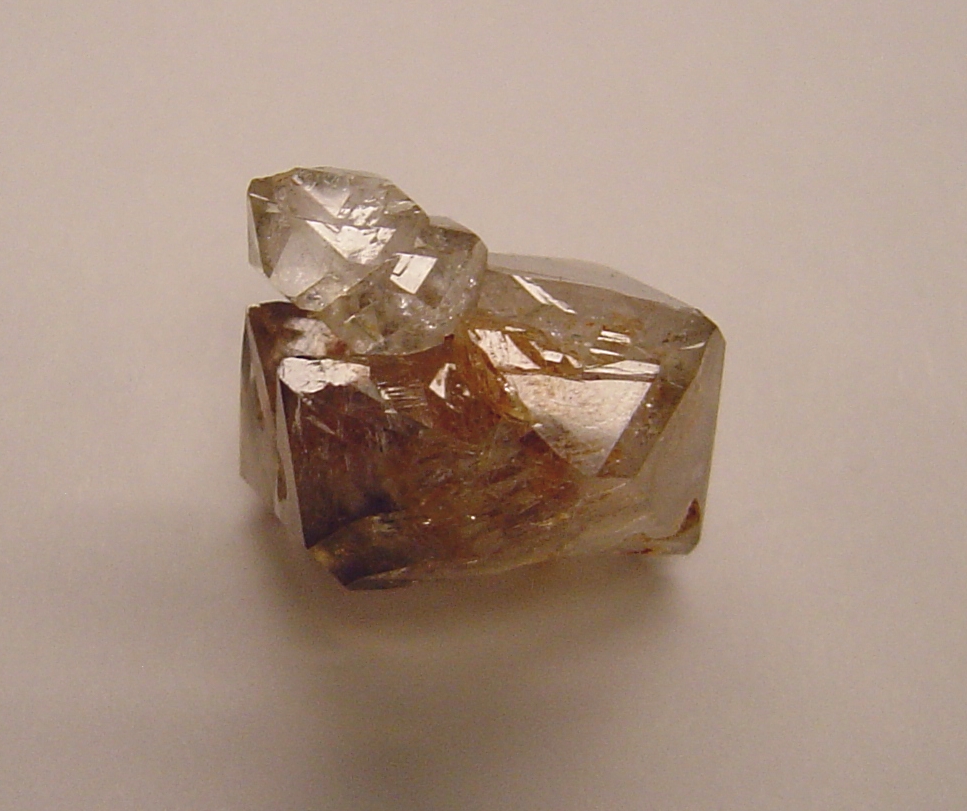
Another view showing the two parallel crystals in contact
with each other.
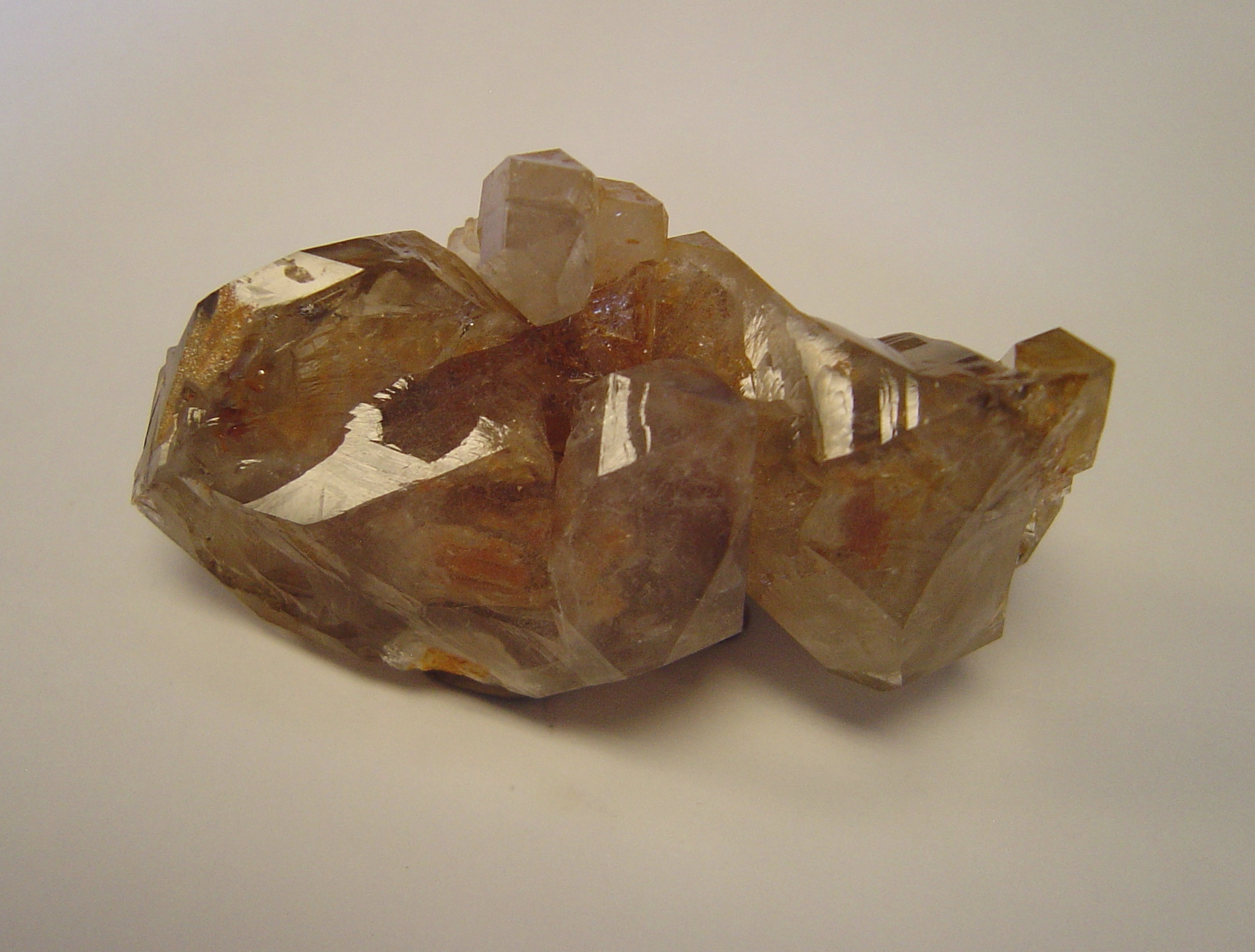
Large complex form, largely bipyramidal.
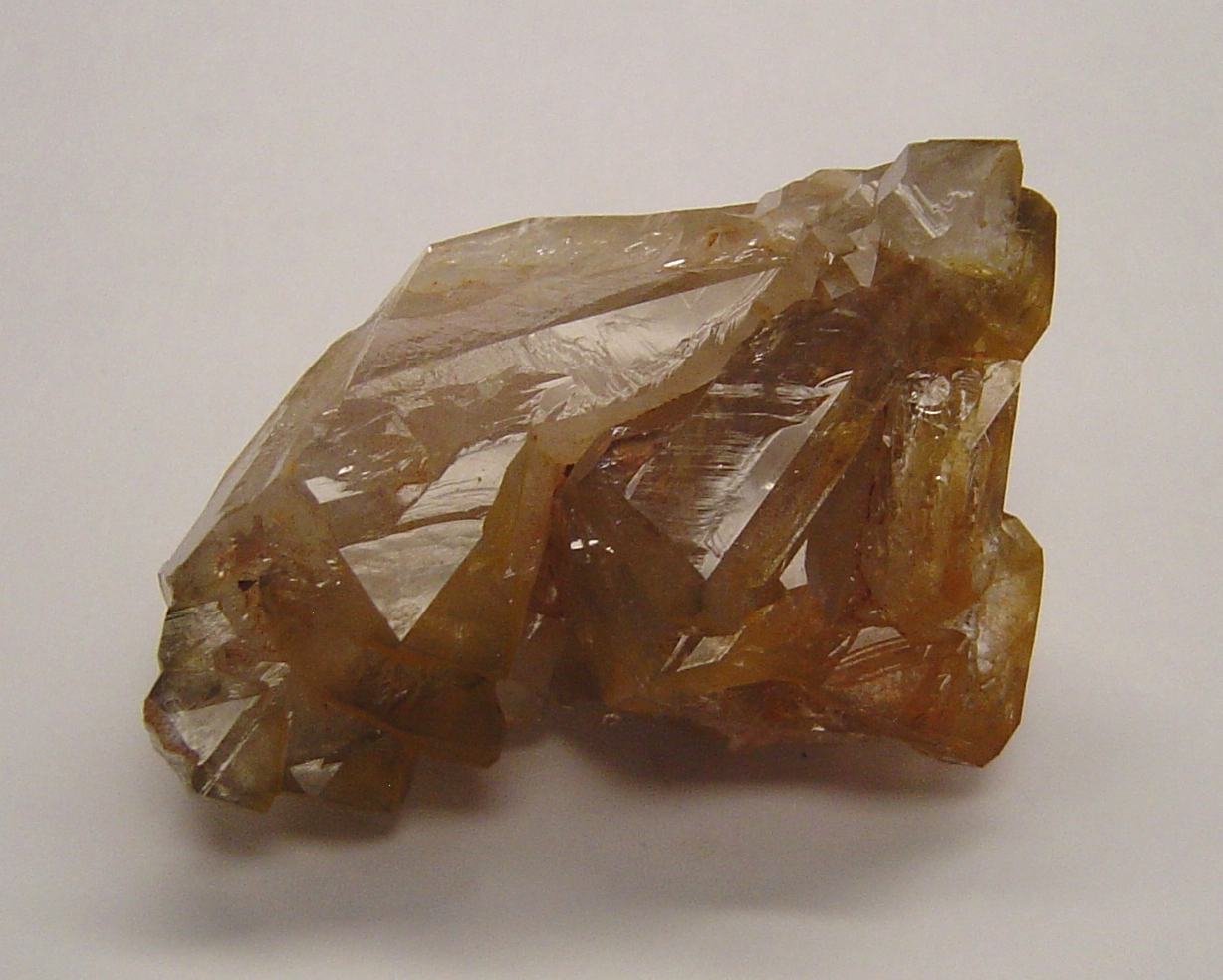
Another large complex bipyramidal form.
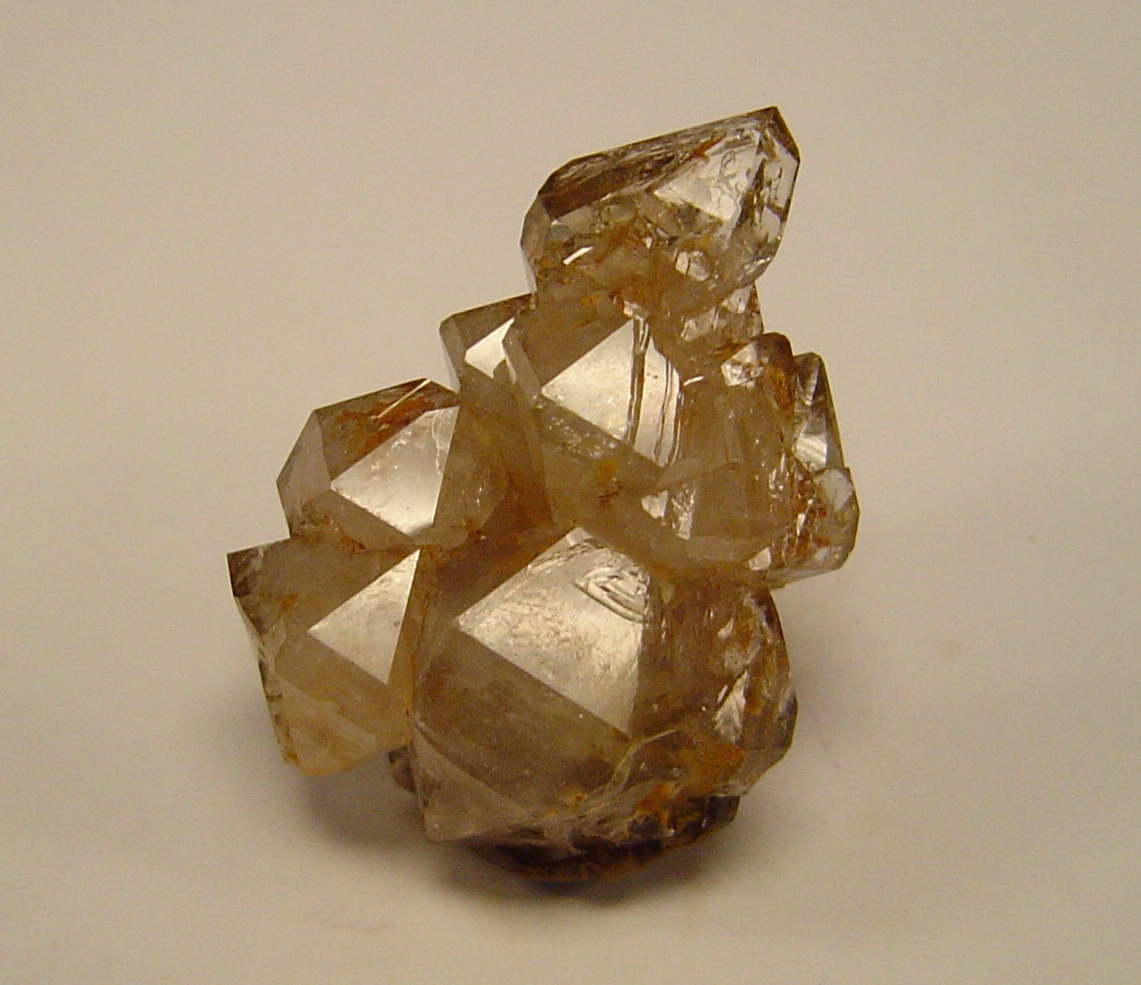
Complex or multiple bipyramidal specimen. The
separate sections were only weakly connected, and had to
be glued together after being collected.

Multiple “fantasy castle” crystal.
Mosheim Anticline
(locality 11)
Red soil exposed in recent
excavation
A shallow excavation exposing red silty
residual soil discovered by Mike Streeter of the North
Carolina Survey
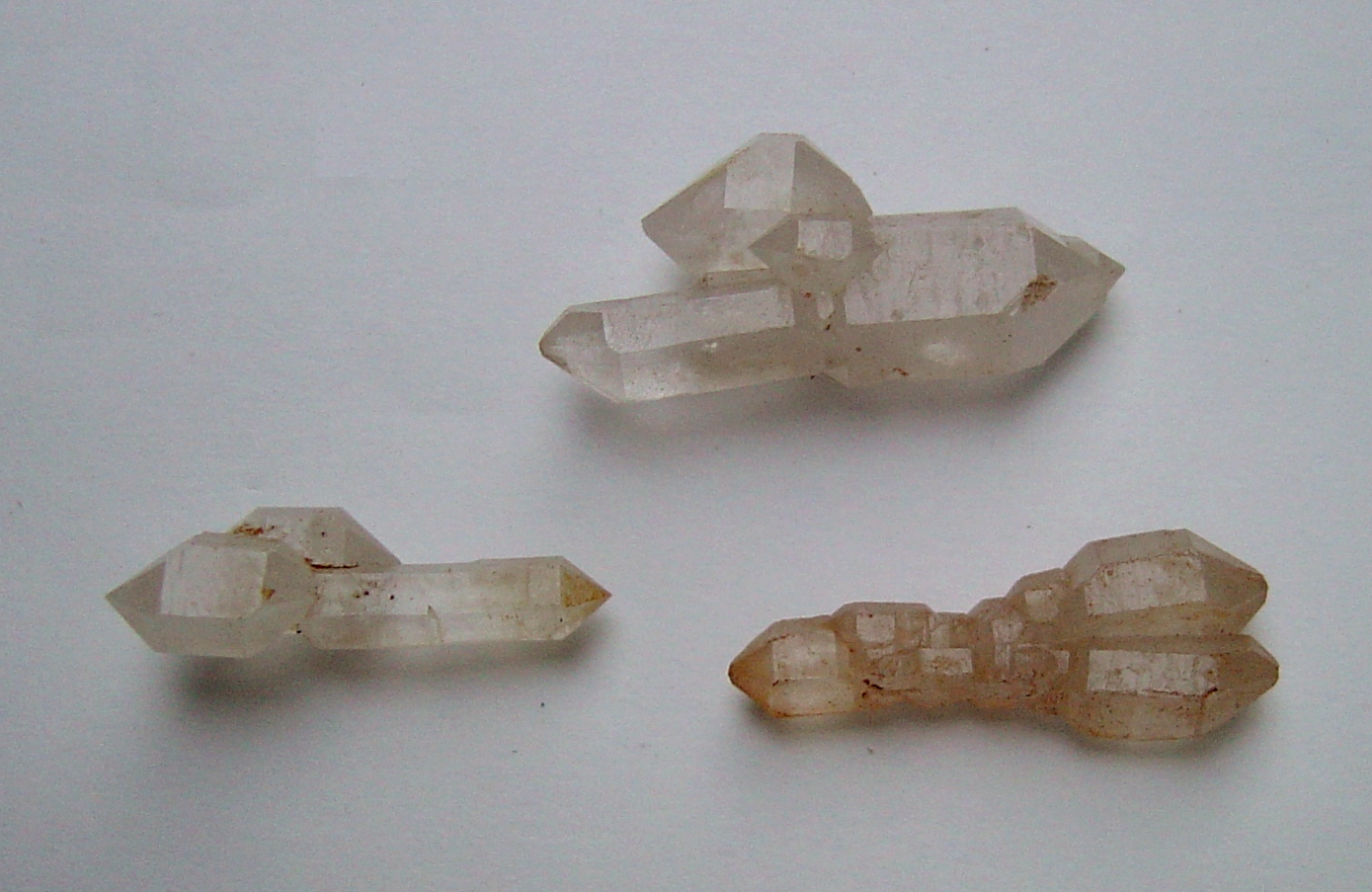
Parallel and “bow-tie” growth forms.
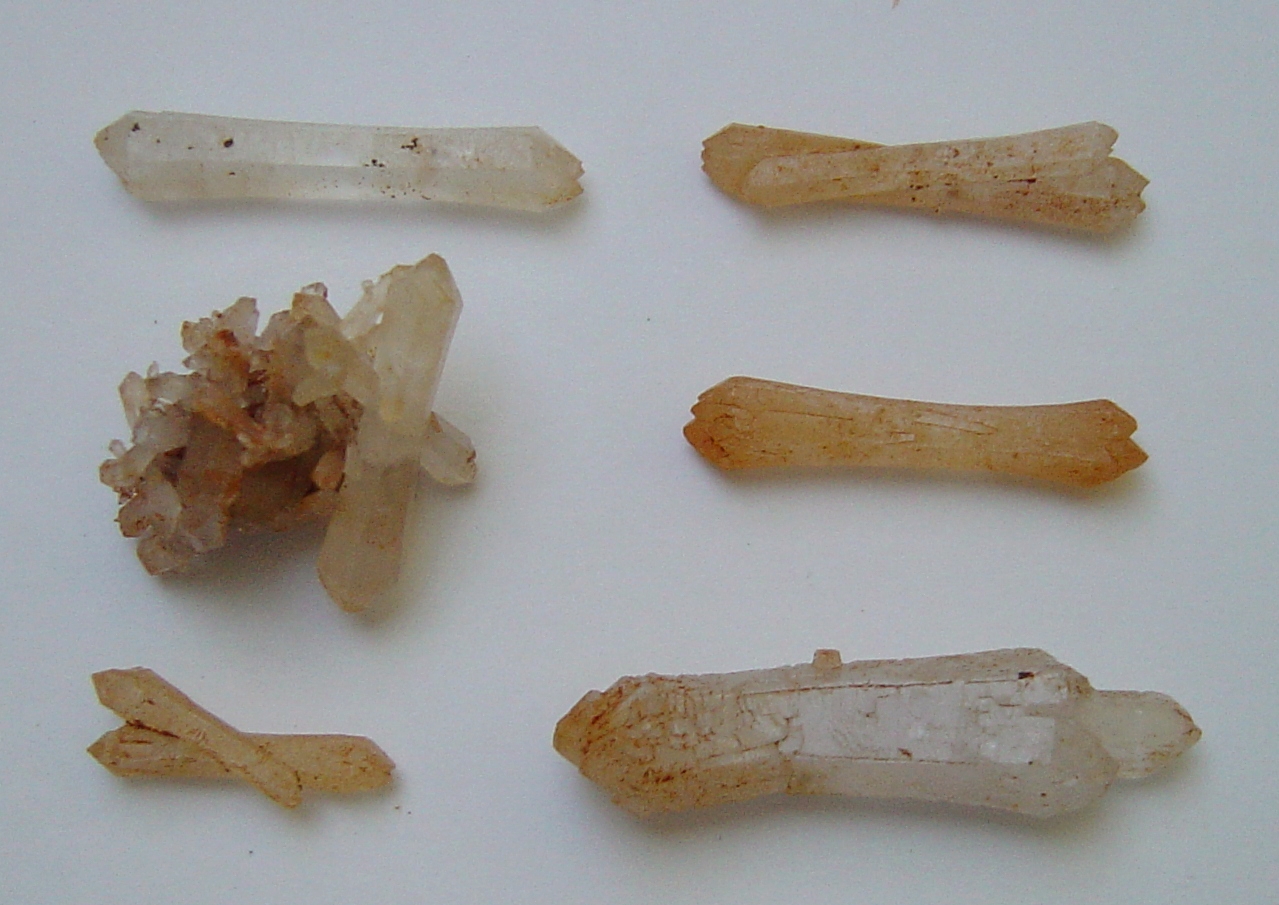
Parallel and “bow-tie” growth forms. These
are the earlier growth forms at this location.
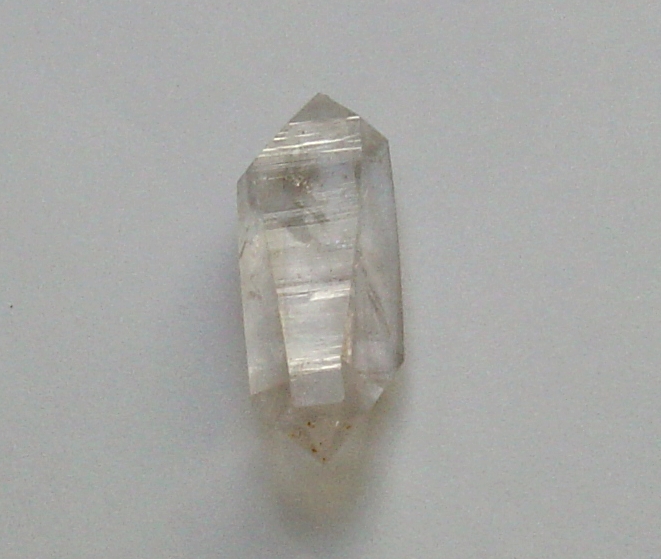
Parallel and “bow-tie” growth forms. These
are the earlier growth forms at this location.
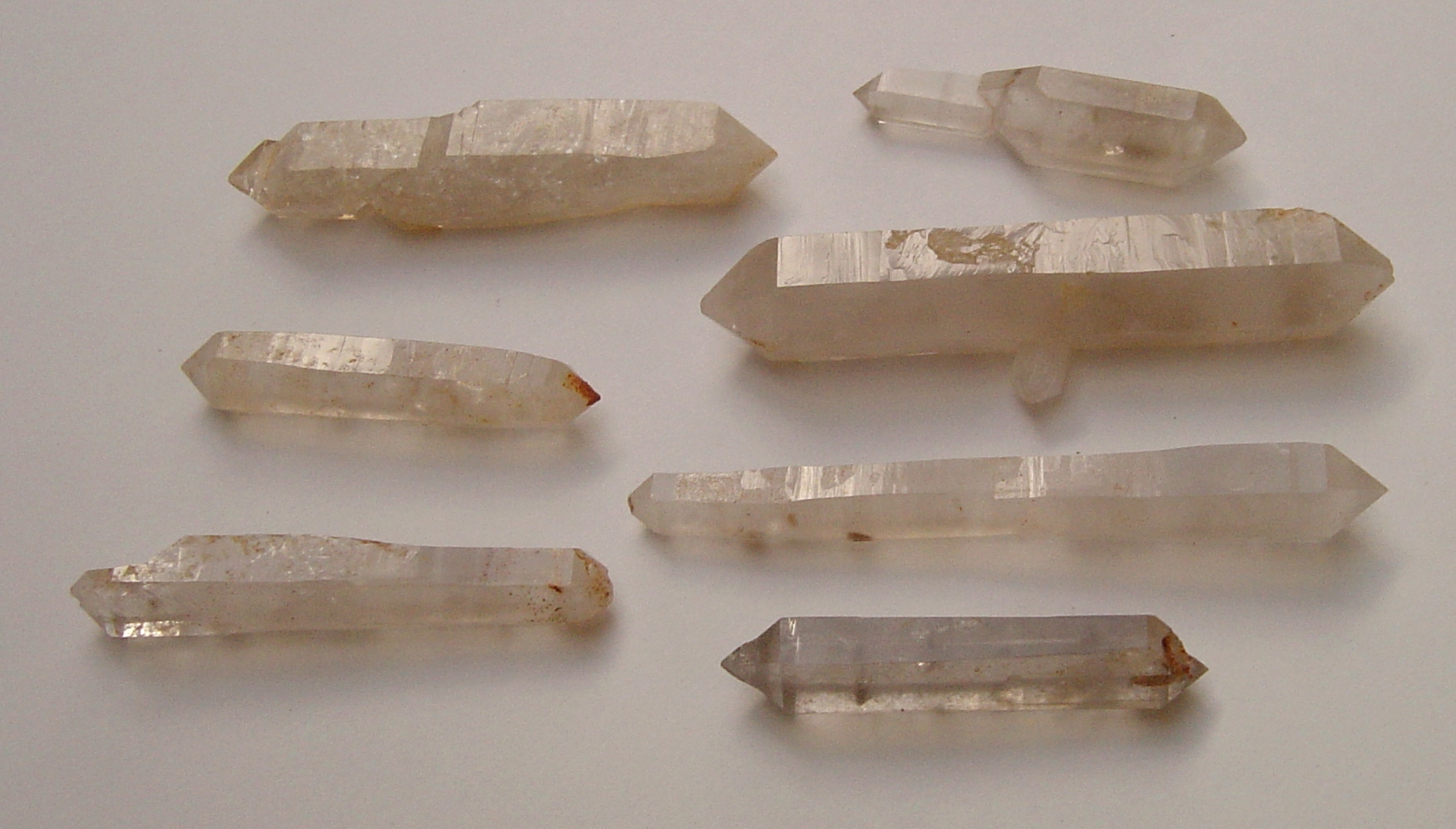
Elongated prisms.
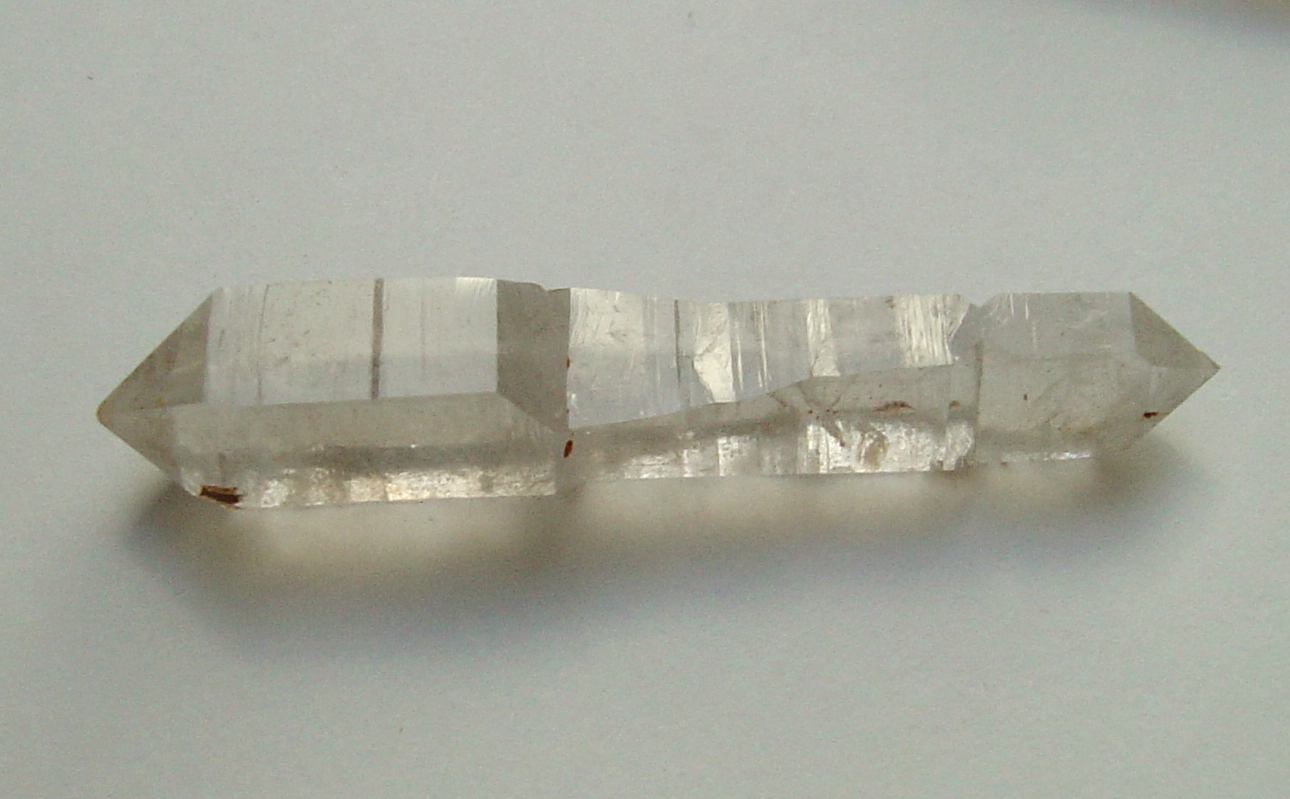
Clear prismatic crystal.
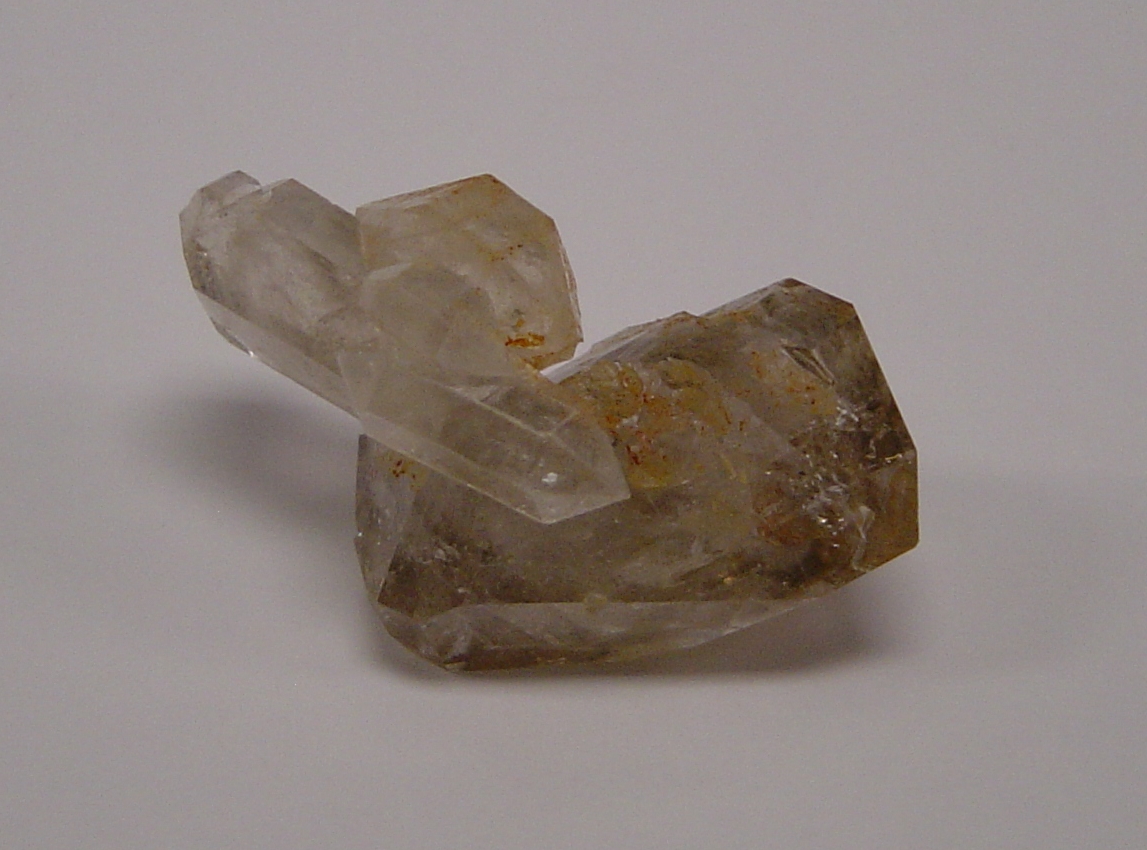
Compound crystal – compound prismatic crystal joined
to a parallel bypyramidal crystal
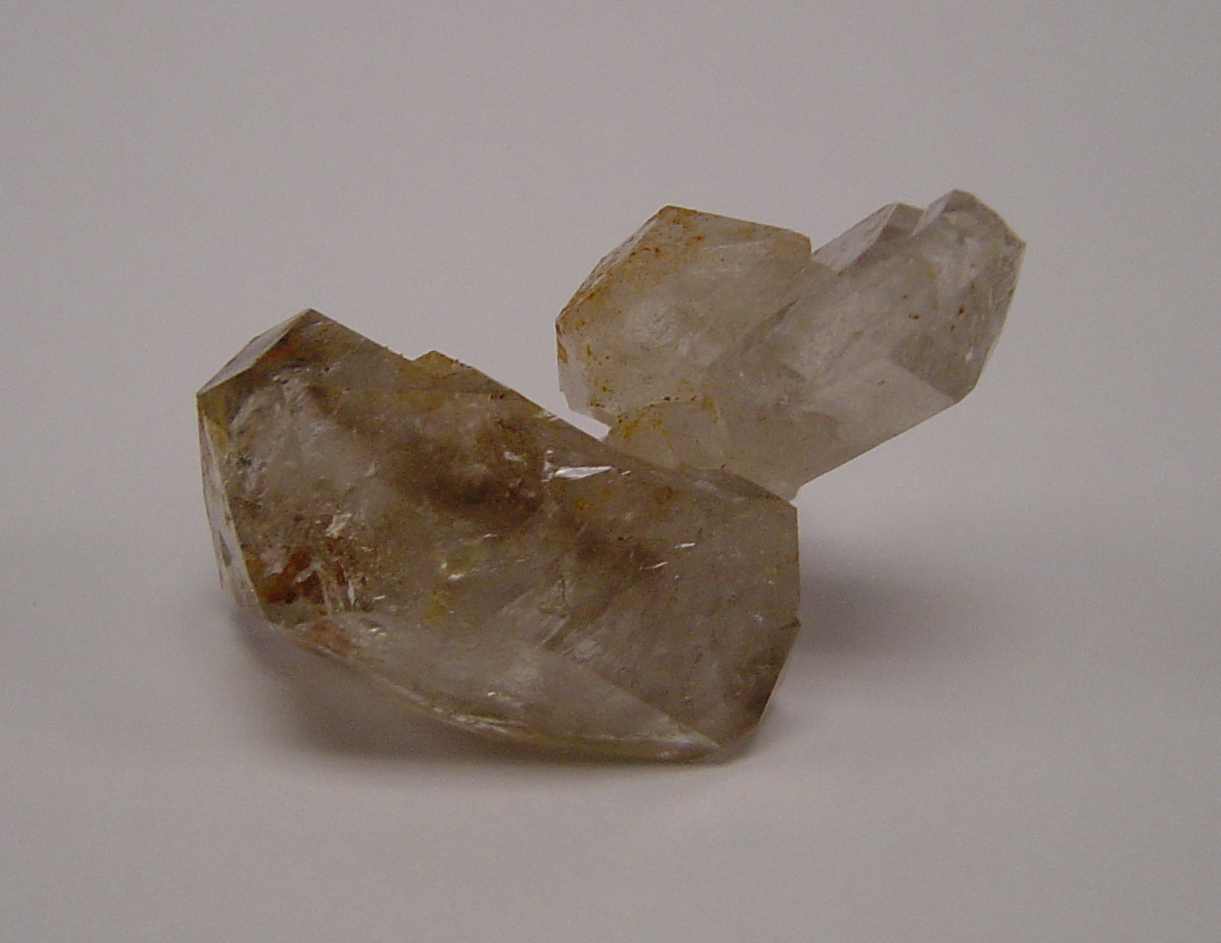
Another view.
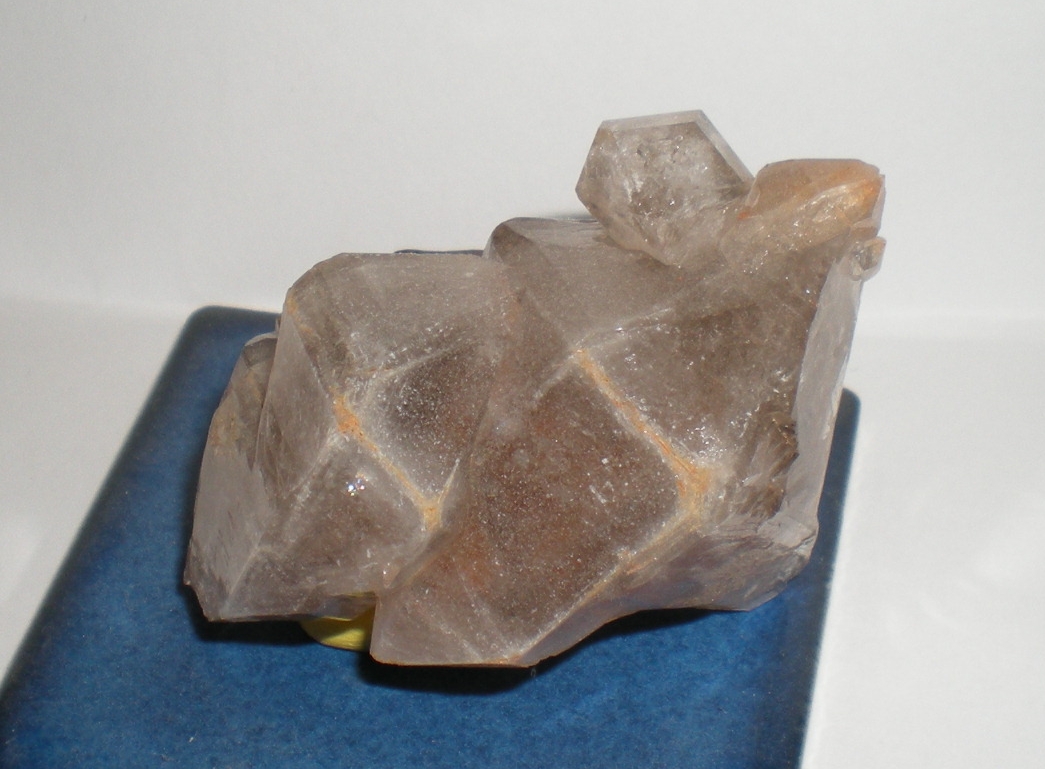
Large crystal picked up by Brett Shaffer.

Specimen showing progression from a rough elongate
crystal through stubby prismatic forms and finally to a
large crystal of bipyramidal morphology.

The other side, showing a large fluid inclusion with
bubble. The inclusion also contains a tiny separate
crystal that moves around when it is tipped or shaken.
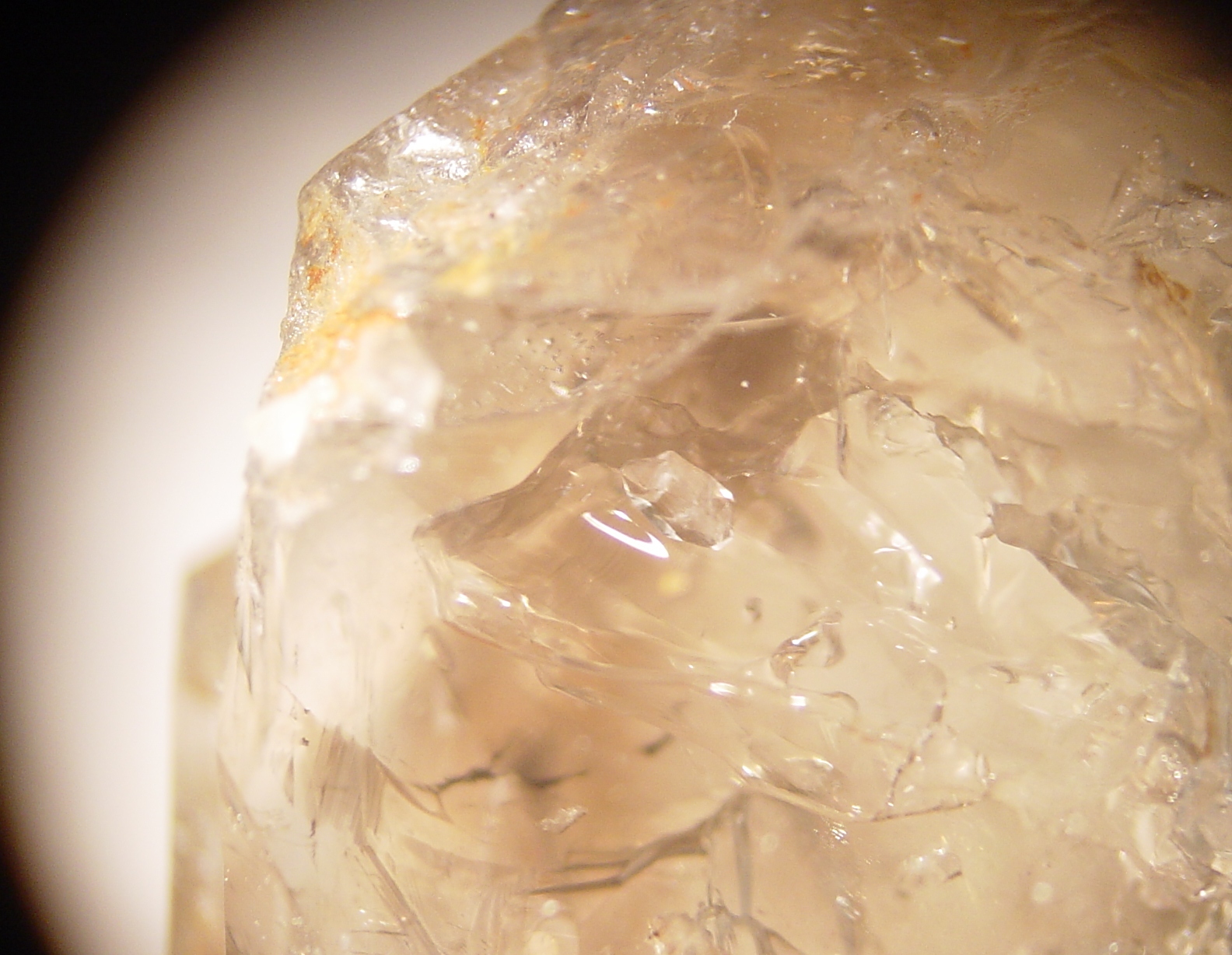
Photomicrograph of loose movable floater (center).
NEXT
Sevier Shale
Quartz crystals in the Sevier Shale show
that at least some quartz deposition took place
during or after the Alleghenian Orogeny.
The
other geologic environment where I’ve found quartz
crystals is the Sevier Shale. Here, they are also
found in open space within vugs, although again, it is
possible there may have been some soluble component
present when they formed. Rock salt may have been a
matrix, and again, anhydrite is common in rocks at depth.
It occurs in the zinc mines for example. But again,
if it was there, you would still see it in the
inclusions.
The
crystals are much simpler in most places. There is
little or no evidence for more than one stage of growth,
but there are some multiple parallel crystals. The
Sevier Shale was deposited after the post-Knox
unconformity, and all open space is the result of
deformation (faulting and folding) that took place during
the Alleghanian orogenic episode.
Quartz_crystals_4.htm
Index
|



















